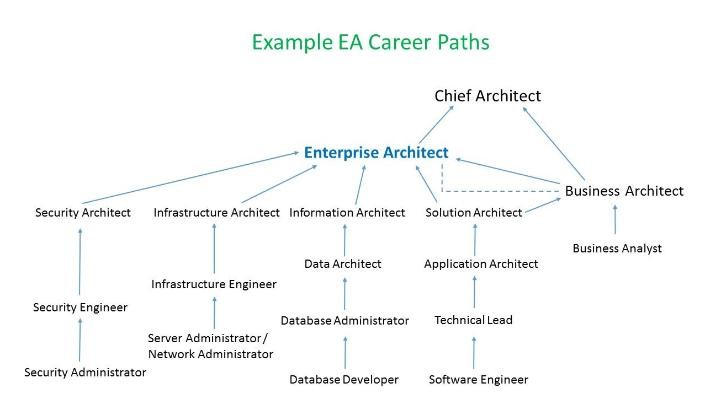How do I become an Enterprise Architect?
Step 2 – Learning More
Welcome back. This is the second in a series of articles on becoming an Enterprise Architect. In the first post, we focused on the need to let go of the technical speciality you’ve developed over the first part of your career. It’s time to step back and start to see the bigger picture. In this article, we ask “What new knowledge do I need to acquire?” The answer depends on where you are coming from.
Your Unique Perspective
It’s likely that the knowledge and skills that have got you this far in your career will not be sufficient to fulfill the role of Enterprise Architect. For example, an Enterprise Architect (EA) must have a solid grasp of business domains such as finance, supply chain management and marketing, and deep knowledge of the particular domains for which they must facilitate change. Many technical professionals who aspire to become EAs, such as software engineers, database administrators or infrastructure support engineers, do not have that knowledge. In addition, EAs use specialized terms, tools, processes and techniques. There is a whole new vocabulary to learn, complete with a dizzying array of acronyms!
So where do you start? Becoming an EA is a journey. Here is a quick diagram to give you an idea of some possible career paths.

While this diagram is by no means exhaustive, it highlights the diversity of backgrounds, and therefore the variety of knowledge and skills, relevant to the EA role. Hidden among these steps are even smaller increments, where individuals will need to first acquire, then develop and mature, particular skills and knowledge.
For example, one doesn’t just step easily from Solution Architect (SA) to EA. While SAs are focused on solving focused problems, EAs work with business and technology executives to develop broad strategies and architectures. SAs must therefore develop and exercise their relationship-building skills to progress their careers.
One intermediate step between the SA and EA roles may be that of a Domain Architect, governing the IT investment for a business domain or technical platform, such as Customer Relationship Management or Integration. In this role, the architect can begin to see how the IT landscape aligns IT to the overall business strategy.
As you can imagine, there’s a lot to learn on this journey. Everyone has their own unique strengths as well as their own set of skill and knowledge gaps. Personal circumstances are important as well. For some, the idea of studying for an MBA in order to gain more knowledge on business practices may be a straightforward step, but for others, this may be unachievable. What’s important to remember, is that regardless of your situation, there are paths available to acquire the knowledge and skills you need to succeed. It’s also important to recognize that the skills and knowledge you have acquired so far in your career have an important part to play in your future. While some EA-roles are business-focused, many EAs are also the most senior technologists within their organizations. A fundamental and deep understanding of technology is still important, but now it’s time to start building on it.
In my next post, we’ll talk about some of the required learning areas for aspiring EAs, including alternatives for aspirants with limited time or money. We’ll be focusing on the most common of the paths shown above, which is the transition from Solution Architect to Enterprise Architect, but much of the material will apply regardless of your chosen path.
The EA Practice Advisor
Darryl Carr
Darryl is a 25 year IT veteran, having provided Solution Architecture and Enterprise Architecture services to companies across numerous industries on both the east and west coast of Australia, including the establishment of EA capabilities. He is a member of an industry advisory group that was formed to advise the Australian Computer Society (ACS) on the scope, skills and body of knowledge of an Enterprise Architect to support a specialist certification in EA.
Darryl presented at last year’s Open Group Conference in Sydney on the definition of EA Skills using the Skills Framework for the Information Age (SFIA). SFIA provides a standard reference model for IT skills and is rapidly becoming the adopted standard internationally for IT skill definition, including as a tool to align the design of university curriculum with the expectations of the IT industry. Darryl is also a member of a number of Special Interest Groups, and is on the program committee of several conferences, including the Australian Enterprise Architecture Conference. He is certified in Enterprise Architecture (TOGAF) and Project Management (PRINCE2), is a Senior Member of the Australian Computer Society (ACS) and an ACS Certified Professional.

